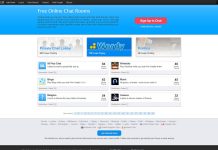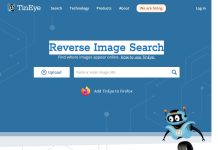As a nonprofit organization, attracting new donors and maintaining relationships with existing ones is crucial to your success. One effective way to achieve this is through email campaigns. In this article, I’ll discuss why email campaigns are effective for nonprofit organizations. Conclude it with some examples of successful nonprofit email campaigns, tools, and resources for creating and managing nonprofit email campaigns and incorporating email campaigns into your overall marketing for nonprofits strategy.
Why email campaigns are effective for nonprofit organizations
Email campaigns are an effective way to reach out to potential donors and keep existing ones engaged with your organization. The ability to personalize messages, segment your audience, and track engagement metrics makes email campaigns a powerful tool for nonprofit organizations.
Personalization is key to building strong relationships with your donors. By addressing them by name and tailoring your messages to their interests, you can show that you value their support and understand their needs. Additionally, segmenting your audience allows you to target specific groups with relevant messages, increasing the likelihood of engagement and donations.
Another advantage of email campaigns is their cost-effectiveness. Compared to traditional marketing methods, email campaigns are relatively inexpensive and can be automated, saving your organization time and resources.
Key elements of a successful email campaign for nonprofits
To create a successful email campaign, there are key elements you need to consider. The first is a clear and concise subject line that grabs the recipient’s attention. Your subject line should be relevant, personalized, and convey a sense of urgency.
Next, your email message should have a compelling message that speaks to your audience’s interests and motivations. Use storytelling techniques to create an emotional connection and demonstrate the impact of their support.
In addition, make sure your email is visually appealing and easy to read. Use images and graphics to break up text and highlight key points. Finally, include a clear call-to-action (CTA) that directs the recipient to take a specific action, such as making a donation or signing up for a volunteer opportunity.
Crafting the perfect email message for your nonprofit
Crafting the perfect email message requires a combination of art and science. The art is in creating a message that resonates with your audience and inspires them to take action. The science is in using data and analytics to optimize your message for maximum impact.
Start by identifying your audience and understanding their interests and motivations. Use this information to create a message that speaks to their needs and highlights the impact of their support.
Next, use data and analytics to optimize your message. Test different subject lines, message content, and CTAs to see what resonates with your audience. Use A/B testing to compare different versions of your message and make data-driven decisions about what works best.
Building your email list and segmenting your audience
Building a quality email list is essential for a successful email campaign. Start by collecting email addresses from your website, events, and other outreach efforts. Make sure to ask for permission to add them to your email list and offer an incentive, such as a free guide or ebook, to encourage sign-ups.
Once you have your email list, segmenting your audience is crucial to targeting your messages effectively. Segment your list based on demographics, interests, and engagement history. Use this information to tailor your messages to specific groups and increase the likelihood of engagement and donations.
Measuring the success of your email campaigns for nonprofits
Measuring the success of your email campaigns is essential to understanding what works and what doesn’t. Use metrics such as open rates, click-through rates, and conversion rates to track engagement and identify areas for improvement.
Analyzing engagement metrics can also help you segment your audience further and personalize your messages. Use data to identify high-value donors and create targeted messages that cater to their interests and motivations.
Examples of successful nonprofit email campaigns
Examples of successful nonprofit email campaigns include messages that tell a compelling story, highlight the impact of donor support, and create a sense of urgency.
For example, Charity: water’s “Thank You” email campaign features a powerful video that shows the impact of donor support in providing clean water to those in need. The email also includes a personal message from the organization’s founder, reinforcing the impact of their support.
Another successful campaign is the American Cancer Society’s Relay for Life email campaign. The message uses storytelling to create an emotional connection with the recipient and includes a clear CTA to donate.
Tools and resources for creating and managing nonprofit email campaigns
There are many tools and resources available for creating and managing nonprofit email campaigns. Popular email marketing platforms include Mailchimp, Constant Contact, and Campaign Monitor. These platforms offer templates, automation, and analytics to help you create effective campaigns.
In addition, resources such as the Nonprofit Email Marketing Guide by Classy and the Nonprofit Marketing Guide by Kivi Leroux Miller provide valuable insights and best practices for nonprofit email marketing.
Incorporating email campaigns into your overall nonprofit marketing strategy
Incorporating email campaigns into your overall nonprofit marketing strategy requires a holistic approach. Start by defining your goals and target audience, and then determine how email campaigns can support these objectives.
Integrate your email campaigns with other marketing channels, such as social media and content marketing, to create a cohesive and consistent message. Use data and analytics to optimize your campaigns, and continually test and refine your messages to improve engagement and donations.
Conclusion: How email campaigns can help your nonprofit achieve its goals
Email campaigns are a powerful tool for nonprofit organizations looking to attract new donors and maintain relationships with existing ones. By personalizing messages, segmenting your audience, and tracking engagement metrics, email campaigns can help your organization achieve its goals cost-effectively and efficiently.
Remember to focus on key elements such as a clear subject line, a compelling message, visual appeal, and a clear CTA. Use data and analytics to optimize your messages and measure success. Finally, integrate email campaigns into your overall nonprofit marketing strategy to create a cohesive and consistent message that resonates with your audience.











